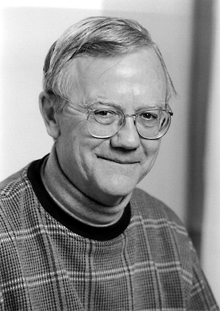Syllabus
>
> When
discussing texts for Travelers on the Silk Road, professor of
comparative literature, English, and religion Michael Murrin quickly
turns sorrowful. "I've been limited by what's in print, by
cost, and by copyright law."
 No
English spoken here
No
English spoken here
He's
also limited by what's been translated. The adventures of Marinus,
an ancient Macedonian explorer of the Silk Road, for example,
exist only in Renaissance Greek texts with Latin translations.
"I'll have to narrate that one for you," he says.
High-priced
travel
The price tag for the course's original list of required texts
tallied to $150, forcing Murrin to merely recommend the $60
Si-yu-ki, a Buddhist record of the Western world penned by
the Chinese monk Xuanzang, who traveled to India during the 7th
century a.d. Divinity students of Buddhism, he advises, would
be wise to make the investment anyway.
Who's
who on the Silk Road
Travel
narratives on Murrin's syllabus date back to 140 B.C. Some personalities
and works on the list are familiar: Marco Polo's Travels;
Rudyard Kipling's secret-agent tale Kim; Tamerlane and
his court, as witnessed by the Castilian envoy Ruy González
de Clavijo. Others will remain a mystery until later in the quarter:
Rabban Sauma ("the East's answer to Marco Polo," says
Murrin), the Hungarian-British archaeologist and geographer Aurel
Stein ("infamous in some quarters"), and Peter Fleming,
whose News from Tartary details his travels from Peking
to Kashmir in the 1930s. For a women's view of the road, Murrin
recommends the "amusing and acidic" writings of Mildred
Cable and Francesca French, missionaries who traveled East during
the early 20th century. The women's works, unfortunately, are
out of print.-
S.A.S.

![]()
 No
English spoken here
No
English spoken here